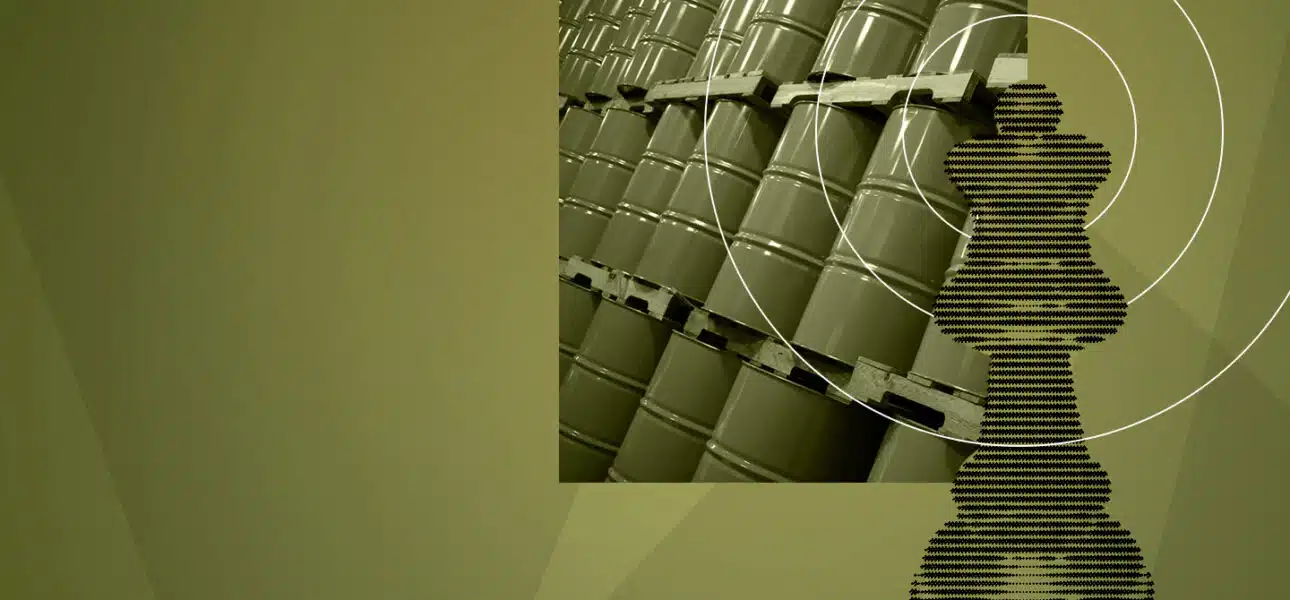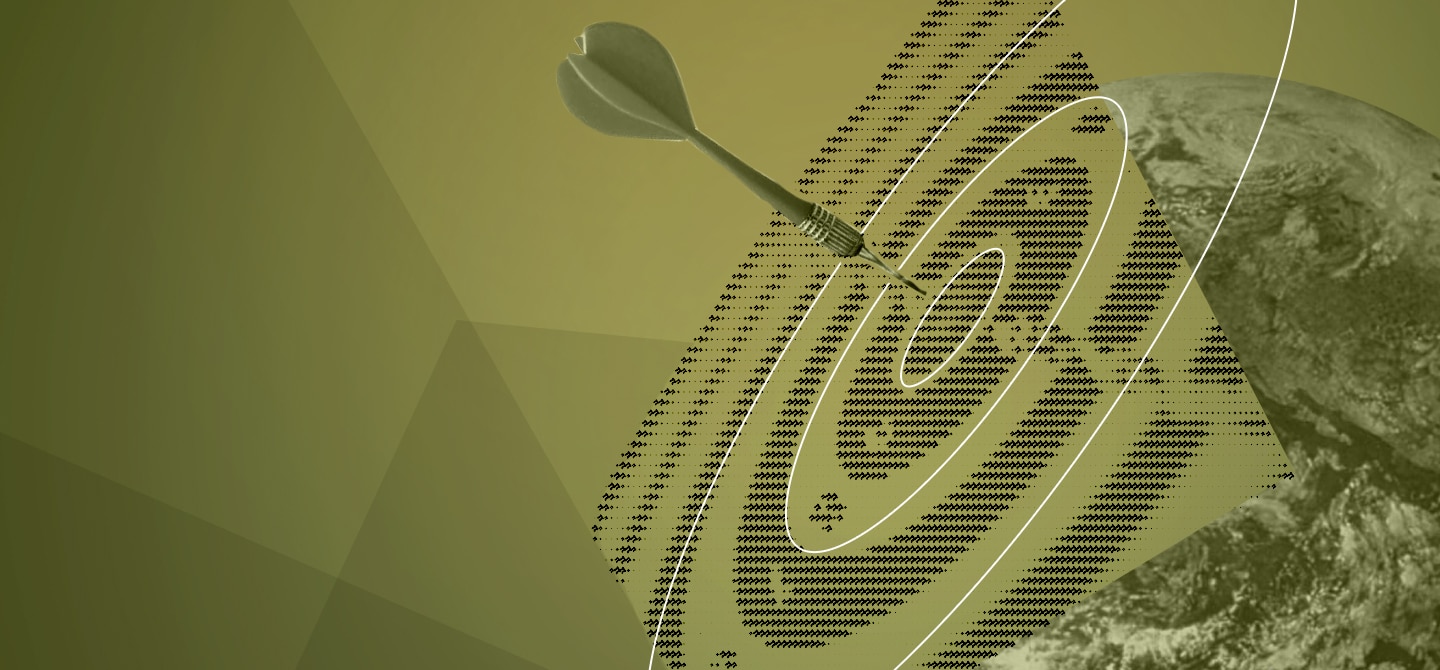In 1973, the world economy was shaken by a major oil crisis. In the wake of the Yom Kippur War1, the Gulf States and OPEC2 decided to reduce their oil production, while increasing the price of crude oil by 17% and taxes for oil companies by 70%3. In just a few weeks, the price of a barrel of oil skyrocketed, rising fourfold from 4 to 16 dollars4. For Western economies, this first oil crisis put an end to three decades of strong growth. In a matter of weeks, purchasing power fell, growth collapsed and unemployment rose. As panic spread among the major multinationals in industrialised countries, Shell, an oil major, seemed to have anticipated the crisis.
The beginnings of planning at Shell
In 1959, Shell set up a planning department called Group Planning. The first planning exercises, designed to determine the company’s strategic positioning, were initially based on forecasting methods that evaluated the future using simple extrapolations of past trends. In 1965, Royal Dutch Shell introduced a computerised forecasting tool called the Unified Planning Machinery (UPM)5. This was designed to predict the company’s financial flows on the basis of the company’s results and estimates of growth in oil consumption. However, this model-based quantitative forecasting method, based on a “business-as-usual” approach, was quickly abandoned in the early 1970s. At Shell, the fear was that it would suppress discussion rather than encourage debate on differing perspectives. In addition, the reliability of the forecast results was becoming less and less satisfactory. By this time, the oil industry was already beginning to question forecasts that implied constant expansion and infinite growth. The presentation of the first results of the Meadows report6 in 1971 on the limits to growth, together with a BP study forecasting a supply constraint linked to voluntary action by OPEC7 member countries, highlighted new risks and new areas of uncertainty.
From forecasting to scenarios at Shell
During the same period, in 1965, Jimmy Davidson, head of economics and planning in Shell’s exploration and production division, started a new activity in London called Long Range Studies8. For this project, he called on Ted Newland, whose aim was to rethink planning in the context of an uncertain future: “When I arrived in London in 1965, I was put in a small office on the 18th floor and asked to think about the future without any real indication of what was expected of me. It was the typical Shell laissez-faire approach. Then I found out what was really going to happen, and that’s when the story really began.” (Ted Newland)9. This appointment marked the beginning of a new, and ongoing10, approach to planning at Shell.
In 1967, Jimmy Davison and Ted Newland, with the help of Henk Alkema and the Frenchman Pierre Wack, began to develop the first long-term studies highlighting alternative futures. To do this, they drew on the expertise of the Hudson Institute, founded in 1961 by Herman Khan, a former RAND Corporation analyst and founder of the scenario method. Based on a study of a wide range of variables (raw materials, geopolitical issues, international politics, cultural values), the aim was to devise alternative scenarios for the future up to the year 2000, in particular to test the viability of the idea of “eternal growth”11. The work carried out with the Hudson Institute highlighted two main scenarios:
- a “standard and harmonious world,” based on free trade and market relations
- a “world of internal contradictions”, based on growing tensions and protectionism12.
At Shell, this work considerably improved our understanding of the company’s geopolitical and competitive environment. More specifically, this exploration highlighted several important results and enabled us to sort out the “predetermined elements” (predictable factors) and the “uncertainties” (uncertain factors). For example, it became increasingly clear that the Gulf States would become the most influential players in terms of oil supply. This meant that the oil market could shift from a buyer’s market to a seller’s market. In this context, the availability and price of oil no longer depended solely on reserves and drilling techniques, but also on the political choices of producing countries.
Scenarios to change the decision-makers’ mental models
For Pierre Wack13, Shell’s scenario planning theorist, the objective has never been to predict the future. The aim of a scenario is to modify a decision-maker’s mental model14. A manager or decision-maker always acts rationally on the basis of his mental model, i.e. his view of the world, his habits, his experience and his perception of his environment. Wack calls a decision-maker’s mental model the “microcosm”. When a manager makes a decision, he evaluates a set of alternatives within his own analytical framework. A manager decides rationally according to his own “microcosm”.

The aim of a scenario is therefore to question, challenge or influence the decision-makers’ “microcosm”. This is why scenarios are less concerned with predicting outcomes than with understanding the forces that would lead to those outcomes. Scenario design is first and foremost a learning process, designed to provide a better understanding of the company’s internal and external environment. Scenarios should then help decision-makers to question their own mental models and modify them if necessary. Scenarios thus enable managers to renew their perception of the environment, to perceive contingency factors and to develop new analytical skills.
hijtnt4og
From this perspective, Wack highlights several important points15. Firstly, scenarios enable a common vision of the future to be expressed, and a shared understanding of new realities to be developed throughout the organisation. However, these scenarios will only be accepted and effective when they have truly transformed the decision-makers’ initial mental models. To achieve this, it is important to avoid studies that include several scenarios describing alternative outcomes along a single dimension. The temptation is always to
From this perspective, Wack highlights several important points16. Firstly, scenarios enable a common vision of the future to be expressed, and a shared understanding of new realities to be developed throughout the organisation. However, these scenarios will only be accepted and effective when they have truly transformed the decision-makers’ initial mental models. To achieve this, it is important to avoid studies that include several scenarios describing alternative outcomes along a single dimension. The temptation is always to identify a median scenario as the most likely reference. On the contrary, the scenarios should focus on very different critical uncertainties to give decision-makers a more in-depth understanding of the risks. Lastly, it is preferable to introduce discontinuities and disruptions in “no-surprise” scenarios. In fact, a scenario with too many breaks would run the risk of being eliminated immediately.
Awareness of potential disruptions to prepare to act
In the 1970s, the scenarios designed by the teams of Ted Newland and Pierre Wack proved to be formidable teaching tools for testing Shell managers’ perceptions of the future. They presented a first set of scenarios: type A scenarios. These scenarios foresaw technical limits to oil extraction. As a result, they envisaged possible supply shortages and a substantial increase in the price of oil, which would generate economic shocks. For Newland and Wack, the future represented by the type A scenarios appeared to be the most likely. However, these results diverged sharply from the implicit vision of the world that prevailed at the time at Shell. As they stood, these scenarios were difficult for top management to accept.
A new family of scenarios was therefore devised: type B scenarios. These scenarios predicted a more benign future, with no major changes. However, in order to make such a prediction, the scenarios had to be based on implausible assumptions and involve highly improbable situations. The implausibility of the assumptions and the improbability of the situations in the B scenarios forced Shell’s management to realise just how different and dramatically disrupted the world would inevitably be. The Newland and Wack scenarios quickly attracted the attention of Shell’s management because they considerably altered the usual analytical frameworks. Management then took two decisions: to use scenario planning in the central offices and operational units, and to communicate the results to the governments of the main oil-consuming countries. The scenarios were then circulated to the business units so that they could assess their strategies in relation to the two sets of scenarios.
For Jan Choufoer, co-ordinator of Shell’s refinery activities, these scenarios provided support for his idea in the event of a sharp rise in the price of oil. His strategy was based on distinguishing between three types of product derived from crude oil17: light fuels (propane, butane), medium fuels (petrol, paraffin, diesel) and heavy fuels (fuel oil, bitumen). He quickly realised that light and medium fuels had a unique value because there were no easy substitutes. For example, the petrol used in car engines could not be replaced by any other substance. Conversely, heavy fuels could be replaced quickly. Fuel oil for heating could easily be replaced by coal or gas. Heavy fuels therefore had to be sold at a competitive price, while light fuels could be sold at a higher price.
In addition, thanks to an industrial process known as “cracking”, refiners were able to produce light products from heavy products. Jan Choufoer then proposed developing additional cracking capacity to convert heavy fuels into light fuels on a massive scale. In the event of a supply crisis or explosion in oil prices, the strategy was to reduce sales of heavy fuels, leave customers for these products to the competition, and rapidly convert heavy products into light products. This extremely costly strategy, known as the “upgrading policy”, became very attractive when there was a significant imbalance between demand for light and heavy products. When oil and light product prices rose, it even became extremely profitable. So when the oil price crisis hit, Shell was ready to act.
Scenario planning at Shell
At Shell, the value of scenarios has never been in predicting the future. The value of scenarios lies above all in the way they enable us to modify, amend and transform our visions of a world in the making. The key to the success of scenario planning is not the identification of a future event, but its ability to elicit action in response to a new perception of the future18. This success, however, depends on the integration of scenarios into organisational processes and routines such as strategy development, risk management, innovation and public affairs19.










